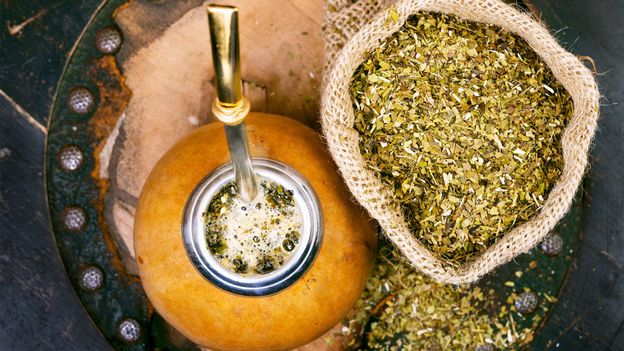“Now with [Lionel] Messi living in Miami, he’s become a great ambassador of mate, like a living showcase of mate consumption,” Johan added. (Fun fact: Messi drinks mate from Uruguay, not Argentina.)
Global messaging platform WhatsApp recently introduced a mate emoji, which points to mate’s growing popularity as people aim for a healthier lifestyle in the post-pandemic era. That’s because mate, said Johan, contains a higher level of antioxidants than green tea or red wine, and a powerful combination of vitamins (A, B, B1, B2, C), 15 amino acids and minerals (iron, magnesium, potassium) from the clay soil where it grows. Perhaps it’s these qualities that also make mate a go-to hangover cure for Argentines.
Nevertheless, in Argentina, mate is ubiquitous, a faithful companion for matters great and small. Yet, unlike coffee or tea, it is not consumed in cafes: it’s what you have at home and at work, in the park and on the train, during class or at the gym.
“I have memories of deciding big things while having mate, like Circodromo. During the huge creative moments in my life, mate is always a part of it. And when I wake up in the morning, the first thing I say is matecito, matecito [a diminutive form of “mate”]. But mate is not only to wake you up; it’s also more of a social thing, for sharing,” said Coll.
The tradition of ronda de mate, or passing around the mate, and the consumption of mate in general, originated with the Indigenous Guaraní people, a group traced back to roughly 500CE who lived (and still live) in what is now southern Brazil, northeast Argentina and Paraguay. The Guaraní believed in the spiritual powers of the yerba mate plant and that “sharing mate with each other was a way of uniting their spirits,” said Diego Morlachetti, tea master and co-director of the yerba mate program at Universidad Abierta Intramericana.

